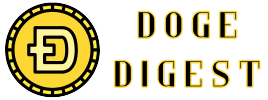In the ever-evolving landscape of digital currencies, Dogecoin has emerged from its playful origins to become a noteworthy player in the world of crypto payments. As more users embrace Dogecoin for everyday transactions, the spotlight turns to the critical question of security. How can individuals and businesses confidently navigate the realm of Dogecoin payments without compromising safety? This article delves into the mechanisms and best practices that underpin secure Dogecoin transactions, exploring how innovation and vigilance work hand in hand to protect users in an increasingly interconnected financial ecosystem.
Understanding the Foundations of Dogecoin Security
At the core of Dogecoin’s security is its robust Proof-of-Work (PoW) consensus mechanism, which leverages a decentralized network of miners to validate and record transactions on the blockchain. This process not only ensures that each transaction is legitimate but also defends against fraud and double-spending attacks. Unlike proof-of-stake systems, Dogecoin’s PoW relies on computational work, creating a verifiable and transparent ledger that builds trust among participants.
Complementing its consensus model, Dogecoin benefits from a strong community-driven approach to network maintenance. Volunteers run full nodes worldwide, enhancing decentralization and making the network resilient to centralized points of failure or attacks. These nodes collectively verify transactions and maintain copies of the blockchain, ensuring no single entity can manipulate the transactional history.
| Security Layer | Key Feature | Impact on Transactions |
|---|---|---|
| Proof-of-Work | Computational validation | Prevents double-spending |
| Decentralized Nodes | Distributed ledger copies | Reduces central point risk |
| Open-source Protocol | Transparent algorithms | Enables community audits |
- Cryptographic Hashing: Secures transaction data against tampering.
- Peer-to-Peer Network: Enables direct, secure transfers without intermediaries.
- Continuous Software Updates: Keeps security protocols up-to-date with emerging threats.
Best Practices for Safeguarding Your Dogecoin Wallet
Security begins with the creation of a strong, unique password. Avoid simple combinations or reusing passwords across wallets and platforms. Integrating a multi-factor authentication (MFA) method significantly reduces the risk of unauthorized access. Tools like authenticator apps or hardware security keys add an extra barrier that hackers find difficult to bypass.
Backing up your Dogecoin wallet is just as essential as securing it. Regularly export your wallet’s private keys or seed phrases and store them in multiple offline locations. Physical copies in waterproof and fire-resistant safes can protect you from digital threats and unexpected disasters alike. Remember, your private keys are the gateway to your funds, so safeguarding them is paramount.
Stay vigilant by routinely updating your wallet software to the latest version. Developers continuously patch vulnerabilities and enhance security features to keep your assets safer. Additionally, be cautious when interacting with unfamiliar websites or QR codes, as phishing attempts and malware remain persistent threats.
- Use hardware wallets whenever possible
- Avoid public Wi-Fi when accessing your wallet
- Verify transaction details before confirming
- Keep software updated regularly
| Practice | Benefit | Risk Avoided |
|---|---|---|
| Strong Password + MFA | Enhanced Access Control | Unauthorized Entry |
| Offline Backups | Reliable Recovery | Loss of Funds |
| Regular Software Updates | Patch Vulnerabilities | Exploitation of Bugs |
The Role of Blockchain Transparency in Secure Transactions
At the heart of Dogecoin’s security lies the fundamental principle of blockchain transparency. Every transaction is recorded on a public ledger, accessible to anyone, ensuring that all parties involved can verify the authenticity and accuracy of payments. This openness drastically reduces the risk of fraud, as any irregular or malicious activity becomes immediately visible to the community, fostering trust and confidence in the network.
Benefits of blockchain transparency in Dogecoin transactions include:
- Immutable Records: Once a Dogecoin transaction is added to the blockchain, it cannot be altered or deleted, securing the integrity of transaction history.
- Decentralized Verification: Multiple nodes across the world confirm each transaction independently, eliminating reliance on centralized authorities.
- Enhanced Traceability: Users can track the flow of funds, helping to identify suspicious patterns or unauthorized spending.
| Feature | Security Advantage | Impact on Transactions |
|---|---|---|
| Public Ledger | Transparent audit trail | Builds user trust |
| Consensus Mechanism | Prevents double spending | Ensures transaction validity |
| Decentralized Nodes | Reduces single points of failure | Enhances network resilience |
Mitigating Risks: How to Avoid Common Crypto Payment Scams
When dealing with Dogecoin transactions, vigilance is your best defense against fraudulent schemes. One of the most effective strategies is to verify every recipient address before sending any funds. Crypto payment scams often rely on subtle alterations of wallet addresses that look authentic at a glance but ultimately redirect your Dogecoin to a scammer’s account. Always copy and paste addresses directly instead of typing them manually and double-check the string character by character.
Another powerful precaution is to leverage multi-factor authentication (MFA) and use reputable wallets or exchanges that offer extra layers of security. These tools dramatically reduce the chances of unauthorized access. Meanwhile, staying alert to common scam tactics-such as fake giveaways, phishing emails, and unsolicited investment advice-can shield you from falling prey to social engineering attacks designed to steal your crypto assets.
To keep your transactions secure, consider these key practices:
- Research the platform: Use only trusted and verified services.
- Beware of too-good-to-be-true offers: If a deal sounds amazing, it likely is a trap.
- Confirm transaction details twice: Double-check addresses, amounts, and payment terms.
| Common Scam Type | Warning Signs | Prevention Tips |
|---|---|---|
| Fake Giveaways | Unsolicited messages promising free Dogecoin | Never send coins first, verify official channels |
| Phishing | Suspicious links or emails mimicking real services | Check URLs carefully, use bookmarks for trusted sites |
| Impersonation | Fake profiles pretending to be well-known figures | Verify identities through multiple channels, ignore unsolicited requests |
Future Innovations Enhancing Safety in Dogecoin Payments
Advancements in cryptographic techniques are setting the stage for a new era in Dogecoin transactions, where enhanced security protocols reduce the risk of fraud and unauthorized access. Emerging technologies such as zero-knowledge proofs and multi-signature wallets are being integrated to ensure that every transaction is not only transparent but also immune to tampering. These innovations will empower users with greater control over their funds while maintaining high levels of privacy.
Adaptive AI-powered monitoring systems are another groundbreaking development on the horizon. By continuously analyzing transaction patterns and wallet behavior, these intelligent tools can instantly flag suspicious activities, alerting users before potential threats escalate. The integration of machine learning models will also help streamline dispute resolution processes, making it easier to tackle errors or fraudulent attempts proactively.
- Enhanced encryption algorithms: Protect data from emerging cyber attacks
- Biometric authentication: Add an extra layer of user verification
- Decentralized identity solutions: Foster trust without compromising privacy
| Innovation | Benefit | Expected Launch |
|---|---|---|
| Quantum-resistant cryptography | Secures transactions against quantum computing threats | 2025 |
| On-chain dispute resolution | Fast, transparent conflict mediation | 2024 Q4 |
| Smart contract audits automation | Reduces vulnerability risks | 2025 Q2 |
Q&A
Q&A: Dogecoin Secure Transactions – Ensuring Safety in Crypto Payments
Q1: What makes Dogecoin a popular choice for crypto payments?
A1: Dogecoin’s popularity stems from its fast transaction speeds, low fees, and a vibrant, supportive community. Originally created as a lighthearted alternative to Bitcoin, Dogecoin has evolved into a serious contender for everyday transactions, making it accessible and practical for users worldwide.
Q2: How secure are transactions made with Dogecoin?
A2: Dogecoin transactions benefit from blockchain technology, which ensures that each transfer is recorded on a decentralized and tamper-proof ledger. While the core Dogecoin network is secure, users must also take precautions with their wallets and private keys to maintain overall safety.
Q3: What steps does Dogecoin use to ensure the integrity of transactions?
A3: Dogecoin relies on a Proof-of-Work consensus mechanism, where miners validate transactions and add them to the blockchain. This decentralized verification process helps prevent fraud and double-spending, reinforcing trust in the network.
Q4: Are there risks unique to Dogecoin transactions compared to other cryptocurrencies?
A4: While Dogecoin shares many security features with other cryptocurrencies, its lower transaction fees and large supply can sometimes attract scammers or phishing attempts targeting less experienced users. Vigilance and verified wallets help mitigate these risks.
Q5: How can users protect themselves when making Dogecoin payments?
A5: Users should employ strong, unique passwords for wallets, enable two-factor authentication where possible, and store private keys securely offline. Additionally, confirming recipient addresses carefully and avoiding suspicious links helps maintain transaction safety.
Q6: Does Dogecoin offer anonymity in payments?
A6: Dogecoin transactions are pseudonymous – they do not directly reveal personal identities but are publicly recorded on the blockchain. Using additional privacy tools or services can enhance anonymity if desired.
Q7: How do merchants benefit from accepting Dogecoin for payments?
A7: Merchants enjoy swift transaction confirmations and minimal fees, making it cost-effective for micro-payments and international sales. The growing popularity of Dogecoin also attracts a broader customer base excited to spend their crypto.
Q8: What future developments could enhance Dogecoin security?
A8: Ongoing upgrades to the Dogecoin network, such as integration with second-layer scaling solutions and improved wallet security features, promise to bolster transaction speed and protection, ensuring Dogecoin remains a safe choice for crypto payments.
Q9: Where can users learn more about securely handling Dogecoin transactions?
A9: Reliable cryptocurrency forums, official Dogecoin resources, and educational platforms offer valuable guidance. Staying informed on best practices and latest security updates is key to safe and confident Dogecoin usage.
This Q&A aims to clarify how Dogecoin transactions maintain security, empowering users to transact with confidence in the evolving world of cryptocurrency payments.
To Conclude
As the world of digital currencies continues to evolve, Dogecoin stands out not just as a playful meme turned serious contender, but as a beacon for secure and accessible crypto transactions. Ensuring safety in Dogecoin payments is more than a technical challenge-it’s a crucial step towards building trust and fostering confidence among users worldwide. By embracing robust security measures and staying vigilant against emerging threats, Dogecoin can continue to bridge the gap between novelty and reliability in the fast-moving landscape of cryptocurrency. In this dance of innovation and protection, every securely executed transaction is a step forward, paving the way for a future where crypto payments are not only exciting but also safe and dependable.




